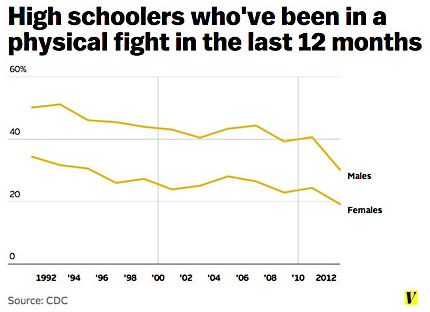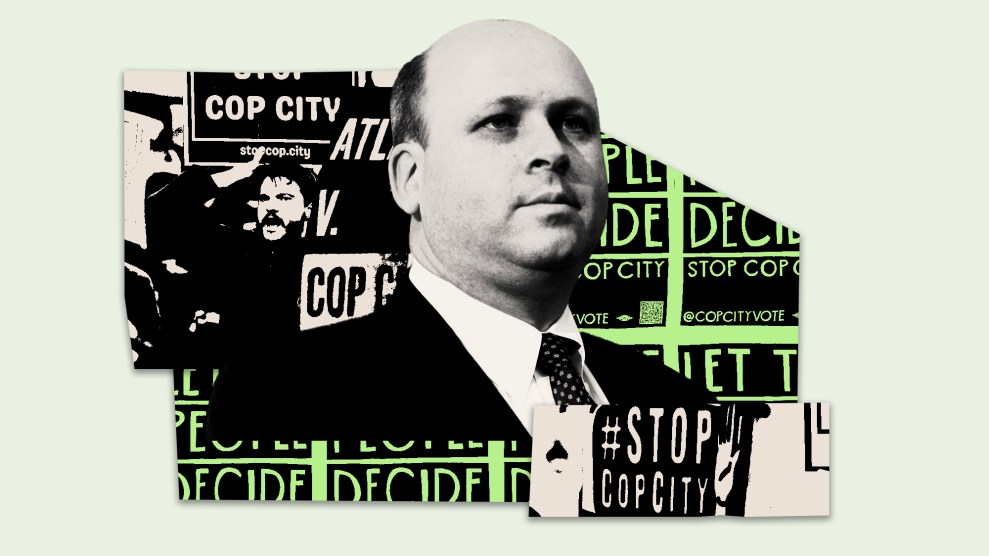
If lead exposure in childhood produces more aggressive behavior later in life, you’d expect lead exposure to be highly correlated with later rates of violent crime. And it is. But you’d also expect to see increases in violent behavior all along the spectrum. Not just rapes and murders, but ordinary bar  fights and punching out kids in school hallways. Unfortunately there’s not much data on this stuff. Unless it rises to the level of cops being called and charges being filed, bar fights just aren’t tabulated anywhere.
fights and punching out kids in school hallways. Unfortunately there’s not much data on this stuff. Unless it rises to the level of cops being called and charges being filed, bar fights just aren’t tabulated anywhere.
But it turns out that schoolyard fights are. And guess what? They’ve been steadily decreasing ever since 1993, just as you’d expect. It’s too bad we don’t have earlier data, so we could see if high-school fighting rose in the 60s and 70s, but this is still an interesting data point that supports the lead theory. It’s not just the most violent crime that’s declined over the past two decades, it’s also the more prosaic types of less intense violence.















